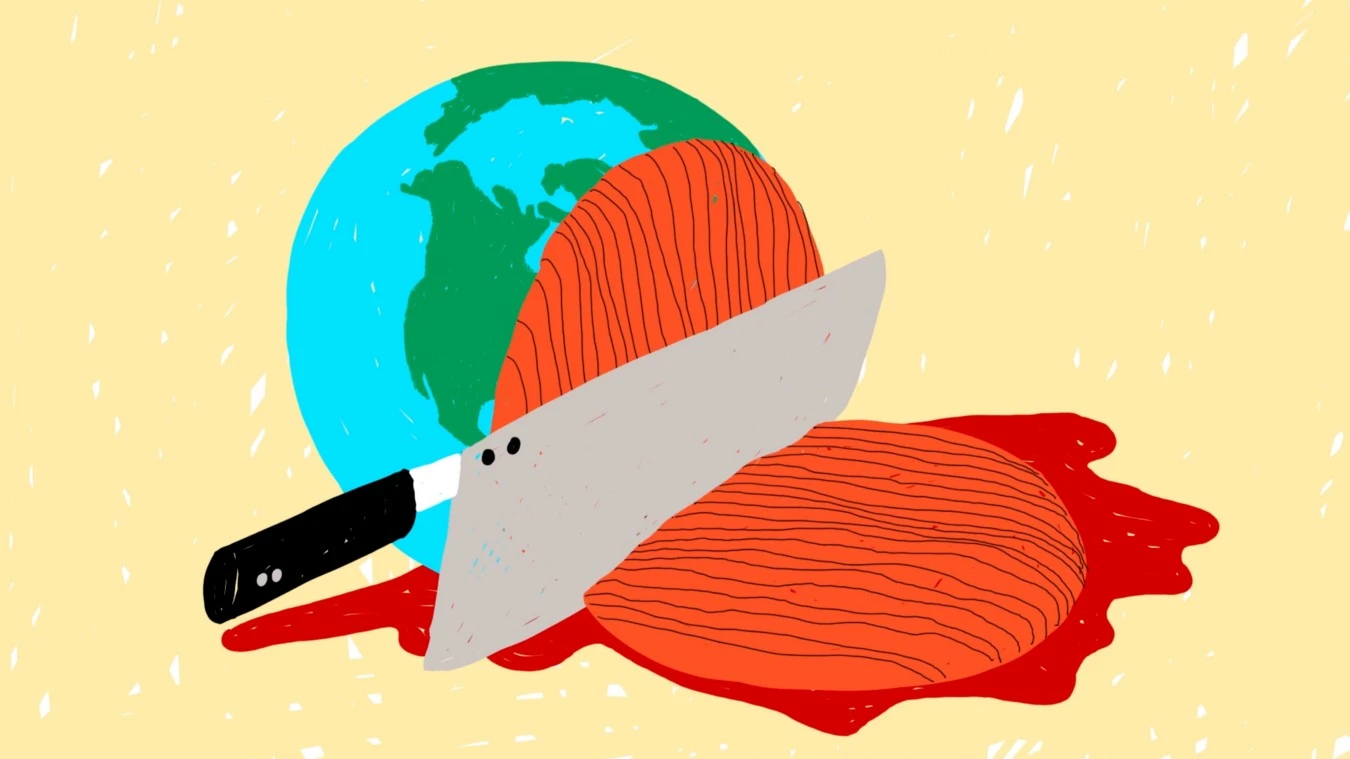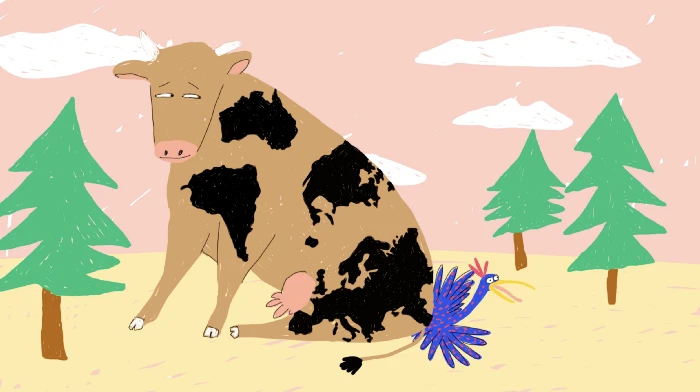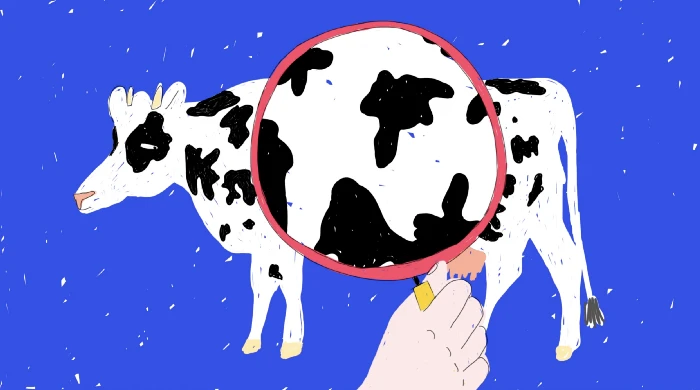The Mission that Motivates Us

Impossible Foods began in 2011 with an ambitious goal: To drastically reduce humanity’s destructive impact on the global environment by completely replacing the use of animals as a food production technology. We intend to accomplish this mission within two decades by creating the world’s most delicious, nutritious, affordable and sustainable meat, fish and dairy foods directly from plants.
An Urgent Problem
Since prehistoric times, humans have exploited animals as a rudimentary technology to transform cheap, abundant plant biomass into highly valued, nutrient-dense foods: meat, fish and dairy. These foods continue to provide an important source of nutrition and one of the greatest sources of pleasure in the daily lives of billions of people around the world.
But our use of animals as a food-production technology has brought us to the verge of environmental catastrophe:
The destructive impact of animal agriculture on the global environment far exceeds that of any other technology on Earth. The greenhouse gas footprint of animal agriculture rivals that that of every car, truck, bus, ship, airplane, and rocketship(opens in a new tab) combined. Animal agriculture pollutes(opens in a new tab) and consumes more water than any other industry(opens in a new tab).
Raising animals for food makes up the vast majority of the land footprint of humanity. All the buildings, roads and paved surfaces in the world occupy less than one percent of Earth’s land surface(opens in a new tab), while more than 45% of the land surface of Earth(opens in a new tab) is currently in use as land for grazing or growing feed crops for livestock. The global demand for meat, fish and dairy foods is a primary driver of the ongoing meltdown(opens in a new tab) in diverse wildlife populations and ecosystems on land and in oceans, rivers and lakes. Unless we act quickly to reduce or eliminate the use of animals as technology in the food system, we are racing toward ecological disaster.

And yet expecting people to eliminate or even reduce their consumption of the animal meat, fish and dairy foods they love is completely unrealistic. We’re not going to solve this problem by pleading with consumers to eat beans and tofu instead of meat and fish. Even many of the world’s most ardent environmentalists, acutely aware of the destructive impact of their diet, continue to eat animals every day. Despite a growing recognition(opens in a new tab) that animal agriculture is destroying the planet, the global demand for animal-derived food(opens in a new tab) continues to rise, now outpacing human population growth. We need to solve this problem another way.
What IF there’s a better way?
Most people erroneously conflate meat, fish and milk (the foods) with the animals that produce them (the production technology). Even the names of many of these foods imply an inseparable link to the animal technology we’ve historically used to produce them. It turns out that consumers love meat, fish and dairy foods not because they come from animals, but in spite of the fact that they come from animals. To most consumers, the fact that we currently use animals to produce these foods is not a valued feature, but a necessary (or so we’ve assumed) evil.
Not only are animals not the only way to produce the world’s favorite foods; they aren’t even the best way. Until today, the only technology we’ve known that can turn plants into meat has been animals' biological systems. But cows, pigs, chicken and fish didn’t evolve to be eaten. They’re terribly inefficient (opens in a new tab)at turning plants into meat, and there’s no reason to think they’ve even come close to reaching the potential for deliciousness in meat.
Six years ago it was only a hypothesis, but today we know that by understanding and optimizing the molecular mechanisms that underlie the deliciousness of meat, we will be able to transform natural ingredients from plants into meat that outperforms the best beef from a cow — not just in sustainability, cost and nutritional value, but in flavor, texture, craveability and even “meatiness.”
Taking the horse out of horsepower
New products and new technologies replace their predecessors by doing a better job of giving consumers what they want and need. The surest strategy for replacing the most destructive technology on Earth is to deliberately create foods that deliver greater pleasure and value to consumers of meat, fish and dairy foods, then offer them as a choice — and let market demand take care of the rest. If this sounds implausible, even impossible, consider a historical precedent in which a ubiquitous, deeply-rooted, traditional animal-based technology was rapidly and completely replaced by a categorically better technology:
Two hundred years ago, the horse was synonymous with powered transportation. Nobody imagined that a cart could move at all, let alone move faster, without the horse to pull it. Horses were fundamental to how the world worked — from how we tilled fields to how we communicated (the Pony Express). But within a few decades, horses were rapidly and all but completely replaced as a transportation technology. They were replaced not because they had an extremely destructive impact on the environment (they did), but because a new technology (automobiles) outperformed the horse in delivering value to consumers. The market quickly decided that cars and other forms of mechanized transportation provide better value than animal-powered transportation, and the rest is history.
For many years, people in many cultures have developed plant-based foods that purport to be replacements for meat, replicating some meaty attributes sufficiently well to satisfy some consumers who are seeking a non-animal-based alternative. But none of these products has taken a serious share of the market for meat; they’ve fallen far short in delivering the powerful array of sensory pleasures that meat lovers crave. Before I even started Impossible Foods, I knew that our success would depend on creating foods that not only match but categorically outperform meat from animals in taste, nutrition and value.
Nobody was seriously working on this problem — the most important and urgent problem in the world — so I quit my dream job as a biochemistry professor at Stanford University School of Medicine to found Impossible Foods.
Science + Nature = Food
Science has always played a critical role in the history of food. All the foods we eat today are the result of millennia of scientific research: exploration, discovery and experimentation that taught us which parts of which plants or animals are edible, and how to process them (for instance, by grinding, cooking, soaking, fermenting or blending) to make them safe, nutritious and delicious. The world’s diverse cuisines have evolved from centuries of experimentation, discovering myriad ways to combine selected ingredients to create dishes that are better than the sum of the parts.
We started by building the best team of scientists and engineers ever to work on food — a team worthy of taking on the most important challenge in the world. We recognized when we started that we didn’t yet know how to do it, nor did we know the toolkit of plant ingredients we would need. We would have to discover the answers.
Our team approached the challenge of creating better meat with the same blend of creativity and concentration, and many of the same tools and techniques, that biomedical scientists use to understand how our bodies work and to discover treatments for previously incurable diseases: Start with the hard fundamental research required to understand the basic principles and molecular mechanisms responsible for the flavors, aromas, textures and juiciness that make meat delicious and craveable; then, discover scaleable plant sources of the specific proteins and other nutrients required to reproduce the magic of meat.

Once we understand how animal meat performs its magic at a mechanistic level, we don’t have to limit ourselves to replicating existing meats; we can use that knowledge to make foods that outperform today’s animal-derived foods in all the ways that consumers value. We can combine simple ingredients from natural sources in easy-to-understand recipes to produce the best meat in the world — from plants. Although the science involved in finding and choosing precisely the right ingredients and recipes is as sophisticated as any biomedical research, the ingredients and recipes themselves can be remarkably simple.
One of our earliest and most important discoveries (based on a hunch) was that the “magic ingredient” responsible for the unique flavors and aromas of meat is “heme(opens in a new tab).” Heme is an iron-containing molecule that occurs naturally in every cell of every animal and plant. It’s an essential molecular building block of life — one of nature’s most ubiquitous molecules — most familiar as the molecule that carries oxygen in your blood, but also a critical part of the system every cell uses to “burn calories” from food to produce the energy that keeps you alive. Heme is super abundant in animal muscle, and it’s the abundance of heme that makes meat uniquely delicious.
You can’t make meat without heme. To satisfy the global demand for meat with a tiny fraction of the environmental impact, Impossible Foods had to develop a scalable way to make heme without animals. We found that by adding a plant gene to yeast cells, we could use fermentation to produce a heme protein naturally found in plants, called leghemoglobin, in essentially unlimited quantities with a tiny fraction of the environmental impact. The heme in the Impossible Burger is identical to the heme humans have been consuming for hundreds of thousands of years in meat — delivering all the unique taste and bioavailable iron content of beef, using but a fraction of the natural resources.
Today’s Impossible Burger requires(opens in a new tab) approximately 75% less water and 95% less land, and generates about 87% lower greenhouse gas emissions than a conventional burger from cows. And while it has the iron and protein, the Impossible Burger is produced without using hormones or antibiotics and contains no cholesterol.
Creating meat is not easy. Even after we discovered the magical role of heme, our R&D team was in for a hard, multifaceted scientific challenge. Our first prototypes were terrible. (Our flavor team once compared an early prototype burger to rancid polenta.) But that’s the way innovation works. Over several years, our product got better and better. In blind taste tests, more and more people say they prefer our product over a burger from cows — and our results keep improving. In a recent test, the Impossible Burger “ran even” with conventional ground beef; about half the tasters (all meat-loving omnivores, no vegetarians or vegans) said they preferred the Impossible Burger over the ground beef burger, without knowing what it was or whether it was different from the burger from cows. We’re not stopping there.
Our goal is to beat the cow in blind taste tests by a substantial margin.
3–2–1…Liftoff
We are actively developing a wide range of delicious meat and dairy products to replace their animal-derived counterparts — a defining goal of our R&D strategy. But as a young startup we wanted to focus our limited resources on a single product that delivered maximum impact and would convincingly show the world that delicious meat doesn’t have to come from animals.
Beef production is the most environmentally destructive segment of the livestock industry. And ground beef is the most popular meat choice in the United States, accounting for about half of our total beef consumption. Versatile and convenient, it’s the basis for the iconic American burger, and it’s a mainstay of dumplings, tacos, pizza, sauces, chili, casseroles, meatballs, soups and more. So making a product that could replace ground beef would have the greatest environmental benefits. And, as the iconic “all-American meat,” our product could convey the message that, in the near future, the best meat will come from plants.
We’re new at this. When we launched our first product, we knew we would need to scale up gradually so that we could learn and iterate. That meant that our first production scale would be small, and we wanted every burger sold to have the highest possible impact in creating our brand. As we were testing prototypes in 2014–2016, we encountered renowned chefs who loved the Impossible Burger and were keen to serve it in their restaurants. So, with very limited supply, we debuted in 2016 in the award-winning restaurants of four top chefs: David Chang, Traci Des Jardins, Tal Ronnen and Chris Cosentino. They helped us send a powerful message that great meat doesn’t have to come from animals.
In 2017, we focused on scaling up our production — a critical part of creating a profitable growth engine. We began making burgers in our food manufacturing facility in Oakland in September 2017, and by January 2018, the Impossible Burger was being served in about 500 restaurants throughout the United States (a 100-fold increase in one year). These restaurants run the gamut, from multi-generation Midwest burger joints to restaurants helmed by international celebrity chefs to beloved multi-unit chains. As we continue to scale, our products will become more affordable and widely available in restaurants, grocery stores and online — a better value overall than their animal-derived predecessors.

And that’s just the beginning. Over the next few years, the best pork, the best chicken, the best fish, cheese, eggs the world has ever seen will be made directly from plants, using the knowhow and tools Impossible Foods is developing today. The biggest realization we’ve had so far is that the replacement of animals as the dominant technology for producing meat, fish and dairy foods is inevitable and coming soon. In the next decade, all of the foods we get today from animals will begin to be replaced by plant-based counterparts that outperform them in every way that matters to consumers — taste, nutrition and value — and trounce them in sustainability.
Joining the movement to #MakeEarthGreatAgain
I’m often asked whether Impossible Foods is a tech startup or a food company. We’re both. But more importantly, we are a planet company. Our real “product,” the measure by which we determine success, is a thriving planet for future generations.
Impossible Foods started in California’s Silicon Valley, but our home is Earth, and our mission is global. Our impact will depend on developing local supply chains and production facilities and enabling local entrepreneurs and farmers to build their own businesses using the tools we’re developing. We intend to focus heavily on leveraging the inherently greater efficiency of plant-based foods to create mainstream, mass-market foods that address the critical nutritional and food-security challenges in the world’s poorest communities.
Addressing the greatest environmental, geopolitical, and public health challenges starts by making the global food system sustainable. By replacing animals in the food system with delicious, nutritious meats made from plants, vast swathes of the Earth’s entire land surface could be spared for biodiversity and wildlife. As natural ecosystems are restored and recovered land converted to plant biomass, photosynthesis (the most reliable and proven carbon capture method, optimized by billions of years of evolution), could stabilize and even (opens in a new tab)reduce(opens in a new tab) global atmospheric CO2(opens in a new tab). Reversing the destruction and degradation of wildlife habitat would also save untold numbers of species from extinction.
By drastically reducing global demand for land and water, success in our mission could reduce conflict over land and water rights, improving geopolitical security. At-risk farmers(opens in a new tab) would have safer jobs and more certain futures, with less fear over climate change. Reducing stress on land and water and improving access to high-protein and iron-rich foods at lower costs would mean fewer conflicts over scarce resources. Bypassing animals and making meat directly from plants would return land to native ecosystems, enabling us to reduce global pesticide and fertilizer use. The urgent public health risk of antibiotic-resistant pathogens and potential pandemic viruses — which evolve and are incubated in concentrated animal feeding operations — would recede.
Decreasing the environmental footprint of food is exponentially more effective — and easier — than switching from gas-powered to electric vehicles, eliminating coal-fired power or building a completely renewable energy grid. Increasing food chain sustainability will ensure that we can feed 10 billion people by 2050, reduce conflict and inequality that leads to humanitarian crises and wars, and make the economy more inclusive. And we will eliminate the confinement, misery and slaughter of billions of animals per year.
Some of the world’s most successful entrepreneurs are working today on audacious projects to colonize other planets, on the premise that the environmental catastrophes humans are creating will soon render Earth uninhabitable. Unlike some skeptics, I admire the entrepreneurs’ ingenuity. But Mars is a feeble excuse for a planet compared to the one we already have, so I’m doubling down on planet Earth. Instead of ditching it, let’s “make Earth great again.”
Dr. Patrick O. Brown is the CEO and Founder of Impossible Foods, and a former pediatrician, Professor Emeritus at the Stanford University School of Medicine, and Co-founder of the Public Library of Science (PLOS). Brown was elected to the United States National Academy of Sciences and the National Academy of Medicine, and is a Fellow of the American Association for the Advancement of Science.